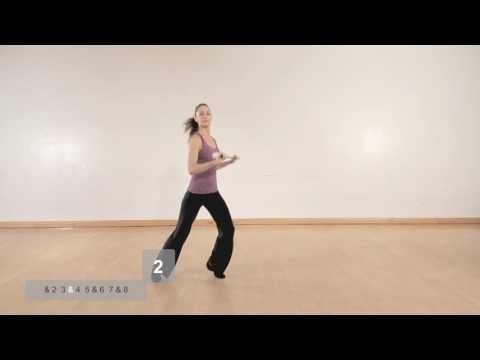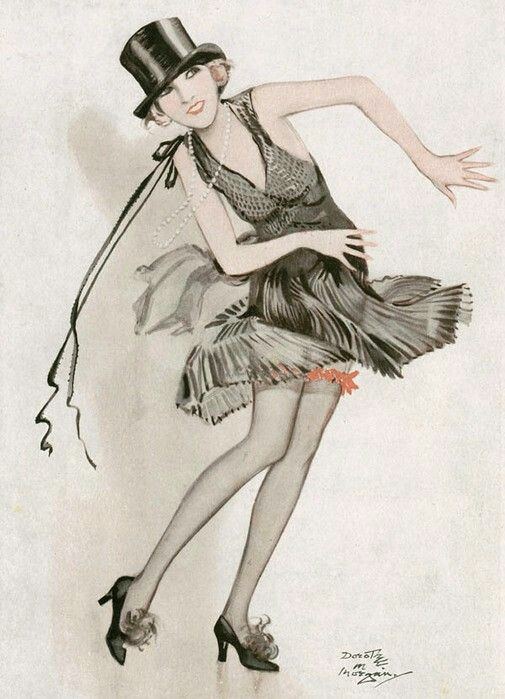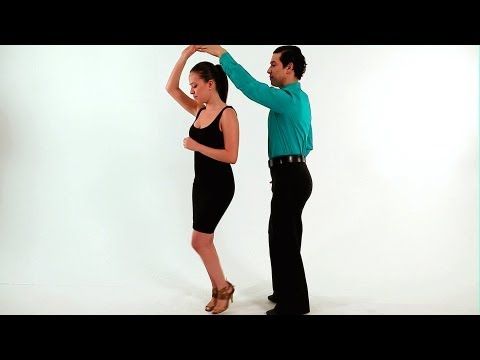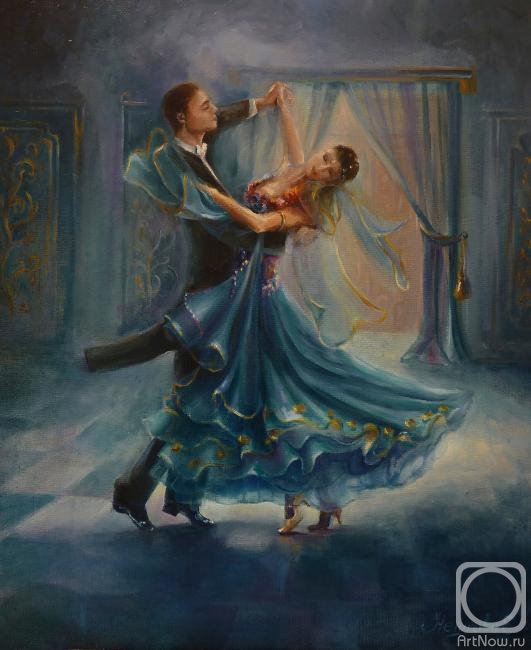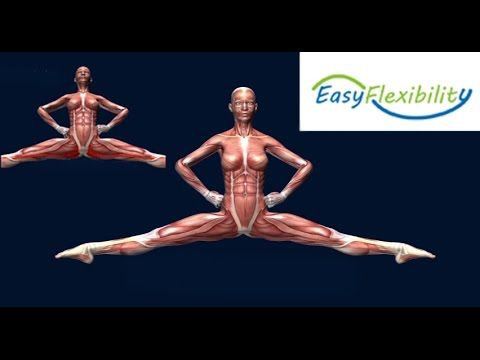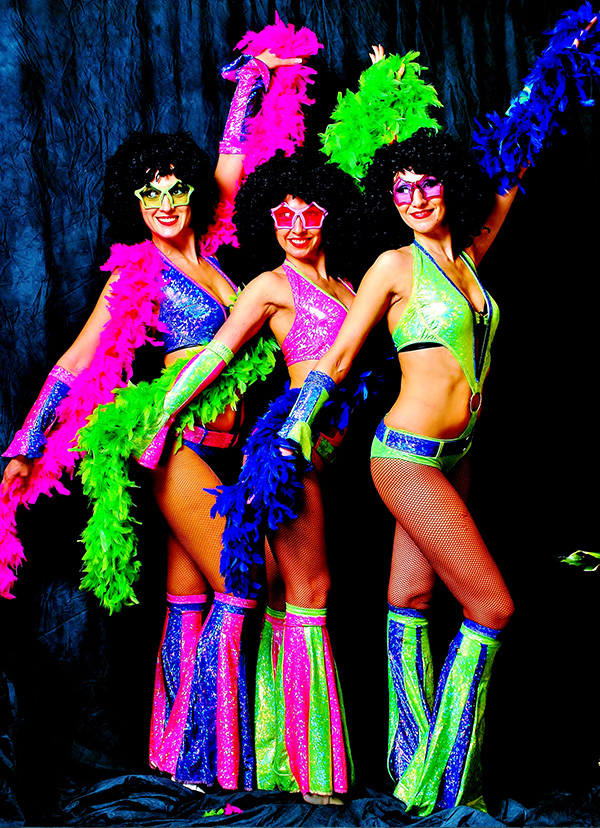Learn how to dance greek
|
|
|||||||||||||||||||||
|
How to Greek Dance by The Guys @ DCGreeks. Remember when you were little and your parents or your Greek School teacher would tell you to learn how to Greek Dance and you'd never listened, thinking to yourself, "Greek dancing's stupid. Why would I ever want to go around and around and around in circles like that?" Now flash forward to your early twenties when you suddenly found yourself not knowing a zembekiko from a zebra. When this happened, you had three options; either you learned how to Greek Dance, you found something else to compensate for your lack of knowledge of Greek Dancing, or you just accepted the fact that you'd never find that Greek girl/guy of your dreams because you couldn't count out 1-2-3-kick without moving your lips. It's like your mama always said, "Greek girls/guys won't give you the time of day if you can't Greek dance." Maybe your mama was over- exaggerating, but in any event, if you fear that the Kalamatiano of life is passing you by, don't worry, because we present to you, How to Greek Dance, How to Fake It, or How to Get by Without It! Knowing Greek Dancing, or at least being able to fake your way through it, is important because the few occasions you'll have throughout the year where there will be a lot of Greek people, especially Greek people you've never met before, will involve Greek dancing.
So you've gotten in a Greek dance line, what do you do? Stick to the basics. In DC, the basics are Kalamatiano, Tsamiko and Hasaposerviko. If you're a beginner, try if at all possible to get to the middle of a line.
Also avoid the very end of the line -- you just look like a complete tool with your arm all flailing about unconnected; it's also the easiest place for someone you wouldn't want to be dancing with to latch on in the middle of a song. If you've gotten to the middle of a line, then basically just follow along and make sure at the very least that you're going in the same direction as the rest of the line. Now if you've been paying attention, you'll notice that we've strictly been talking about Greek line-dancing to this point. There are two main dances that aren't in a line, the zembekiko, tailored to the fellas, and the tsifteteli, a chance for the ladies to show off their moves. If you're a guy and a zembekiko is playing and you're not very good, this might be a chance to go get a drink. Come back toward the end of the song and then plop down on one knee and start clapping for the other guy who will be surrounded by the rest of the girls and the guys who have already been up. Like playing spin the bottle at your Greek cousin's house, hopefully your turn won't come around. The guy's part during a tsifteteli is easy -- just sit there and clap or snap your fingers approvingly as the girl you're dancing with/staring at goes to work. So you've read our helpful hints, you've followed our easy to follow instructions, but you still can't Greek dance, then what? If you're a guy, make up an injury. Remind girls of the time you scored 40 in a GOYA basketball game and blew out your knee on the game winning shot. Actually we knew guys back in the day who were with really great Greek girls whose athletic ability and time in the gym more than made up for their lack of coordination on the dance floor. If you're not the largest guy in the world, consider buying a new car -- General Motors is currently offering 0.0% APR for 36 months on all new cars, so there's no better time to buy. If you're a girl and you can't Greek dance, don't worry, because they'll be plenty of guys on the sidelines who can't or won't Greek dance and will be happy that you don't equate a guy's Greek dancing ability with the size of his tsarouhia. Read past feature articles.
Share
|
7 Traditional Greek Dances You Should Know About
Traditional Greek Dance Performance│© Kurt Bauschardt / Flickr
Ethel Dilouambaka
10 January 2018
In a country where folk dances are as alive today as they were in ancient times, Greece counts over 4,000 traditional dances spread across all regions of the country. Some dances are also known outside the Greek borders and were brought to many corners of the world thanks to the vast Greek diaspora. With the social function of bringing the community together, traditional dances are usually performed at weddings, baptisms, births or name days, or festivals and holidays such as Easter. Here are seven traditional Greek dances you should know.
With the social function of bringing the community together, traditional dances are usually performed at weddings, baptisms, births or name days, or festivals and holidays such as Easter. Here are seven traditional Greek dances you should know.
Sirtaki, also spelled syrtaki, is probably one of the most famous Greek dances known around the world. However, few people know that sirtaki only dates back to the 1960s. In fact, eminent Greek musician Mikis Theodorakis created the dance for the movie Zorba the Greek. By alternating slow and fast steps from the hasapiko and hasaposerviko dances, sirtaki was born. Its most famous characteristic is the acceleration, moving from a 4/4 tempo to a 2/4 pace. It is danced in a line or circle formation, with hands placed on their neighbor’s shoulders.
https://www.youtube.com/watch?v=CbmbSjeUrxc
The hasapiko is a traditional dance with roots from Constantinople. It originated in the Middle Ages as a battle dance that butchers used to perform with swords. The hasapiko, which serves as the inspiration for the sirtaki, is a dance that progresses from a slow to a faster pace, which is called hasaposerviko, or Serbian hasapiko, which refers to the Balkan influences of the fast-paced version. The hasapiko is performed in a line or open circle formation, with each dancer putting their hands on their neighbor’s shoulders, just like in the sirtaki.
The hasapiko, which serves as the inspiration for the sirtaki, is a dance that progresses from a slow to a faster pace, which is called hasaposerviko, or Serbian hasapiko, which refers to the Balkan influences of the fast-paced version. The hasapiko is performed in a line or open circle formation, with each dancer putting their hands on their neighbor’s shoulders, just like in the sirtaki.
A popular folk dance known throughout Greece and Cyprus, the kalamatianos is danced in a circle, with dancers holding hands. A festive dance, the kalamatianos has roots that date all the way back to antiquity, in the early writings of Homer, while the name derives from the city of Kalamata, located in Southern Greece. But don’t let the name fool you, as the kalamatianos is actually a Pan-Hellenic dance and is considered the national dance of Greece.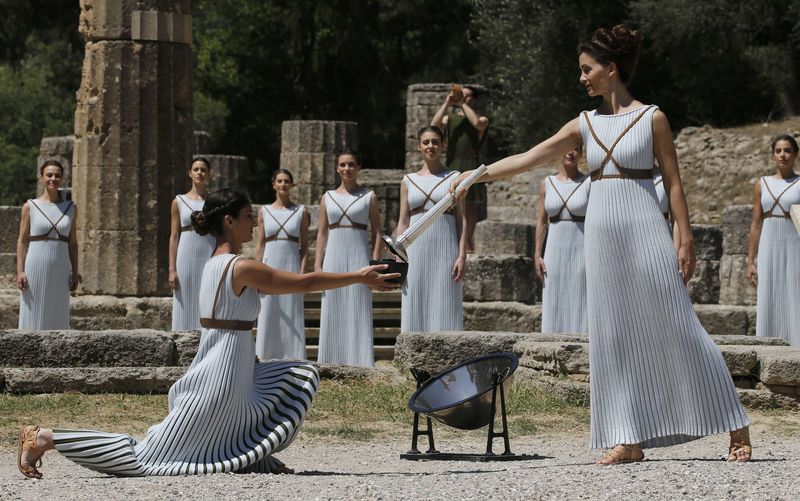
Very energetic, the pentozali is a fast-paced dance that originated in Crete. Involving a line formation where dancers hold onto one another at the shoulders, it is led by a lead dancer who can perform variations as she/he pleases, while the remaining dancers follow the basic steps. While the tempo is rather moderate at first, it progresses into a faster pace, which is translated into more intricate moves from the lead dancer.
A dance strictly performed by men in the past, the tsamiko (or kleftiko) is another Pan-Hellenic traditional dance, popular in Peloponnese, Central Greece, Thessaly, and Epirus, where a slower version exists. Following a strict tempo, the dance doesn’t focus so much on basic steps but more on the attitude of the dancers, placed in a circle formation and holding each other’s hands at a 90-degree angle, with the lead dancer performing leaps and squats, depending on the melody and rhythm.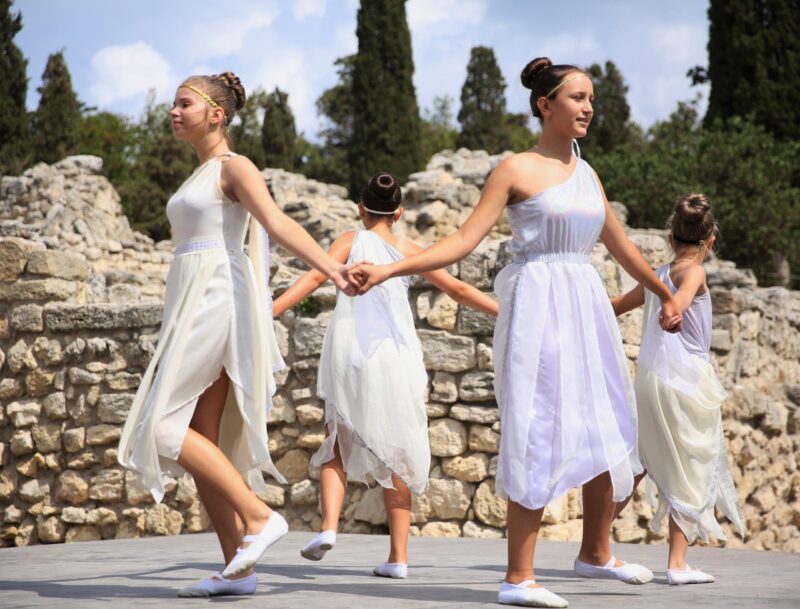 When both women and men dance the tsamiko, it includes a “double banister,” with men (usually in foustanella) dancing in the outer circle, and women in the inner circle, or a simple ring where one male dancer is followed by a female dancer and so on.
When both women and men dance the tsamiko, it includes a “double banister,” with men (usually in foustanella) dancing in the outer circle, and women in the inner circle, or a simple ring where one male dancer is followed by a female dancer and so on.
Part of the nisiotika (nisi, means island) dances, which contains dances and songs from the Aegean islands, the ikariotikos is a traditional dance from the island of longevity, Ikaria, in the northeastern Aegean Sea. While the dance was, in the beginning, a slow dance, the modern version of the ikariotikos is much faster. Performed in an open circle by men and women holding hands at shoulder height, the dance includes three parts. In the first, dancers perform slow walking steps, while in the second part, the pace quickens to reach the third section, where the quick steps showcase the agility of the body and legs.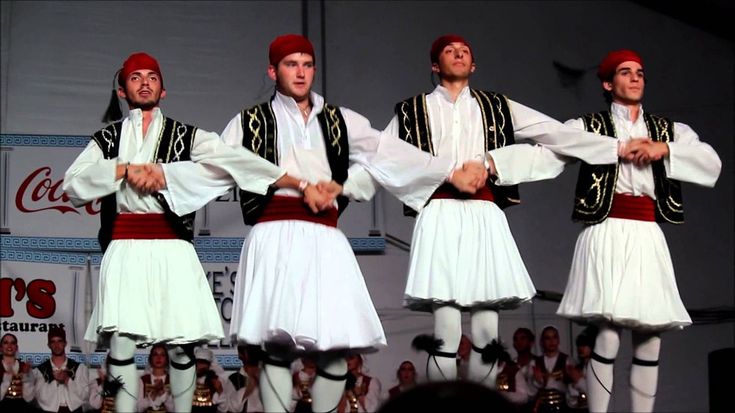
Contrary to most of the dances presented here, the zeibekiko is not a dance performed in a group and is, therefore, a difficult dance to learn; it doesn’t have any particular steps to follow, only certain figures. Originally a dance performed by two armed men facing one another, it slowly developed into an improvised dance for men. Also known as the “eagle dance,” the zeibekiko is performed with arms open wide and has a strong intensity. Today, the dance has lost a bit of its tragic aspect and is performed by men (and sometimes women) at weddings and other social gatherings.
https://www.youtube.com/watch?v=ytdtmxrF8lw
Since you are here, we would like to share our vision for the future of travel – and the direction Culture Trip is moving in.
Culture Trip launched in 2011 with a simple yet passionate mission: to inspire people to go beyond their boundaries and experience what makes a place, its people and its culture special and meaningful — and this is still in our DNA today.
 We are proud that, for more than a decade, millions like you have trusted our award-winning recommendations by people who deeply understand what makes certain places and communities so special.
We are proud that, for more than a decade, millions like you have trusted our award-winning recommendations by people who deeply understand what makes certain places and communities so special.Increasingly we believe the world needs more meaningful, real-life connections between curious travellers keen to explore the world in a more responsible way. That is why we have intensively curated a collection of premium small-group trips as an invitation to meet and connect with new, like-minded people for once-in-a-lifetime experiences in three categories: Epic Trips, Mini Trips and Sailing Trips. Our Trips are suitable for both solo travellers and friends who want to explore the world together.
Epic Trips are deeply immersive 8 to 16 days itineraries, that combine authentic local experiences, exciting activities and enough down time to really relax and soak it all in. Our Mini Trips are small and mighty - they squeeze all the excitement and authenticity of our longer Epic Trips into a manageable 3-5 day window.
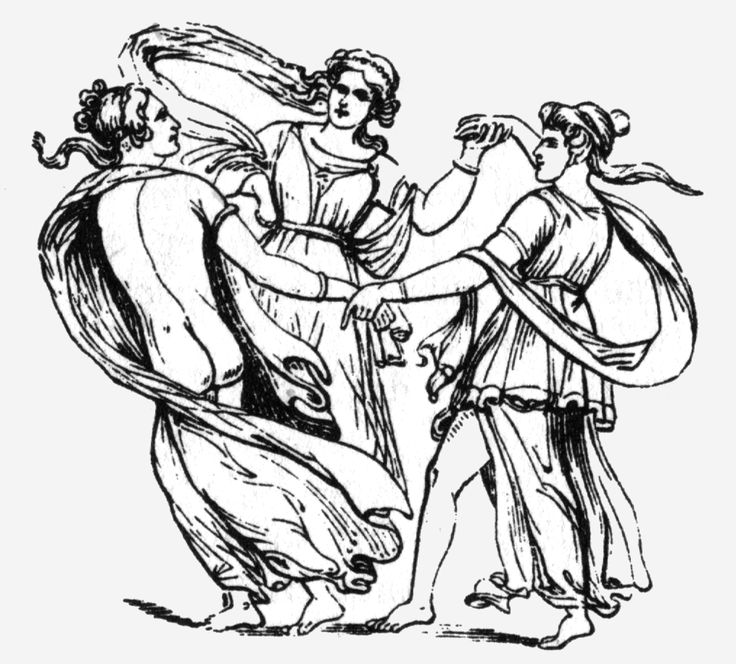 Our Sailing Trips invite you to spend a week experiencing the best of the sea and land in the Caribbean and the Mediterranean.
Our Sailing Trips invite you to spend a week experiencing the best of the sea and land in the Caribbean and the Mediterranean.We know that many of you worry about the environmental impact of travel and are looking for ways of expanding horizons in ways that do minimal harm – and may even bring benefits. We are committed to go as far as possible in curating our trips with care for the planet. That is why all of our trips are flightless in destination, fully carbon offset - and we have ambitious plans to be net zero in the very near future.
90,000 Greek dances - Greek Cultural Center in MoscowAdded: 08 September 2022 17:36
Greek With and 9000 To in L B T in 9000 N 9000 9000 s C E H R 9000 9000 9000 9000 9000 9000 9000 9000 9000 9000 9000 9000 9000 9000 9000 9000 9000 9000 9000 9000 9000 9000 9000 9000 9000 9000 9000 !! Act N On with T B - P O C T O H 9000 9000 9000 9000 9000 9000 9000 9000 in 9000 O - P about with L E D 9000 9000 9000 9000 006 On
in A T EE N 9000 b - in EP H O T B -9000 60007 P R E D A N N 9000 L
TA N E C.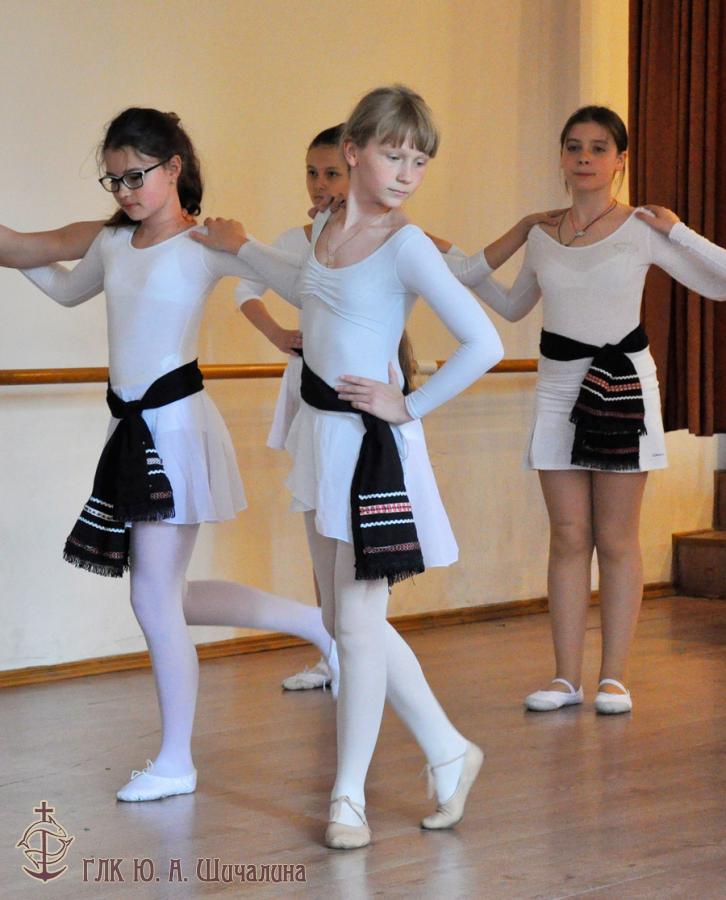 T A 9000 E 9000 9000 9000 9000 and 9000 and 9000 and 9000 and 9000 and 9000 and 9000 and 9000 and 9000 and 9000. Sh.0005 E C - GREEK DANCE!!!
T A 9000 E 9000 9000 9000 9000 and 9000 and 9000 and 9000 and 9000 and 9000 and 9000 and 9000 and 9000 and 9000. Sh.0005 E C - GREEK DANCE!!!
Children and adults
Greek dancing - updated schedule
for ZA R 9000 S X and D E T HEY!!!
http://www.hecucenter.ru/ru/greekdances/
http://www.hecucenter.ru/ru/greekdances/events/ 000
9000 http://www.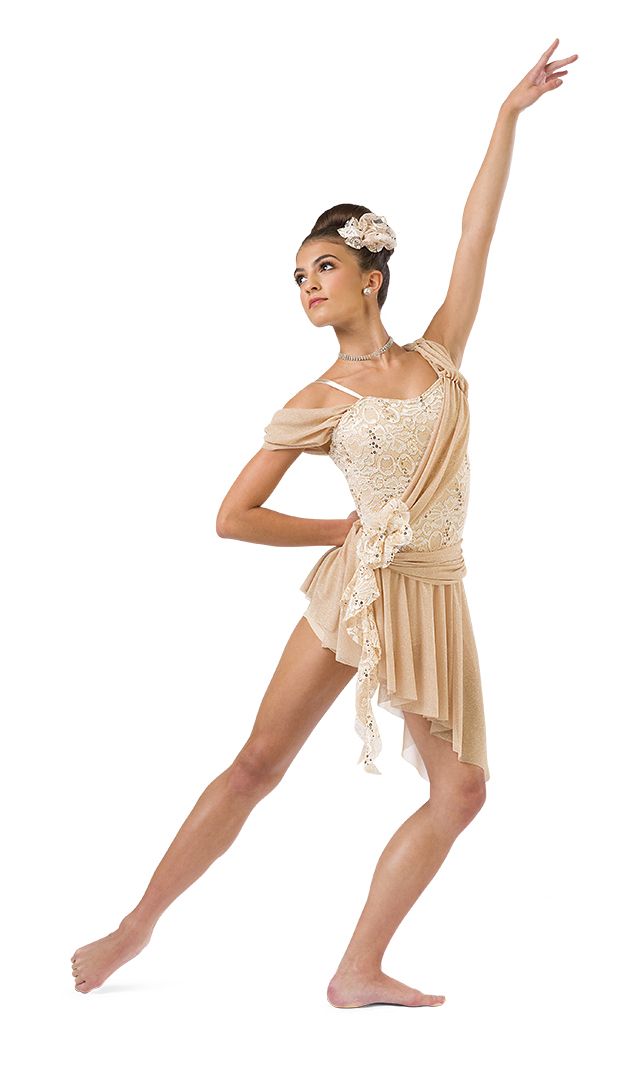 hecucenter.ru/ru/greekdances/history/
hecucenter.ru/ru/greekdances/history/ https://www.instagram.com/greekdances_hcc/
https://instagram.com/greekvocal_hcc
https://www.facebook.com/Oxana.Rakcheeva.Korobko
Attached is a link to the section about dancing on our website GCC http://www.ruhecu023center /ru/greekdances/zanyatiya_po_tancam_pri_gkc.html
Send your e-mail and skype addresses and we will register you!!!
Dear friends!
We are glad to inform you that from September 2022 at Greek Cultural Center (GCC) resumed classes in Greek folk dance groups GREEK WORLD ; new groups are opening for beginners - everyone, for children and adults .
We invite you to plunge into the world of traditional dances.
Greek Cultural Center (GCC) is pleased to announce that for everyone who wants to get acquainted with the rich musical and dance traditions of the Greek World and learn how to dance the most popular national dances from different regions of mainland and island Greece, the land of Pontus, Asia Minor, Cappadocia, there are Greek folk dance groups , for children and adults, both for beginners and advanced ones who already have certain skills !!!
Everyone is given a unique opportunity to get acquainted with the rich musical and dance traditions of Greece and learn how to dance the most popular national dances from different regions of the country, with the further prospect of performing as part of the Dance Ensemble of the Greek Cultural Center - GKC .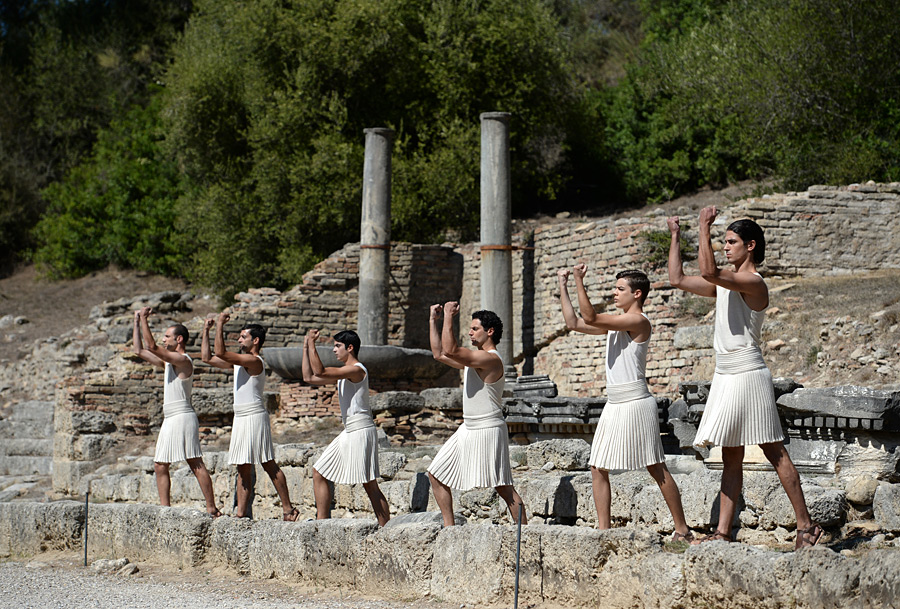 Head of the Dance Team - Oksana Rakcheeva . Our repertoire includes more than 500 dances from insular and mainland Greece, Smyrna and Pontus. You will be able to immerse yourself in the richest traditional world of Greek dances and music, learning authentic dance performances from different regions from the original sources.
Head of the Dance Team - Oksana Rakcheeva . Our repertoire includes more than 500 dances from insular and mainland Greece, Smyrna and Pontus. You will be able to immerse yourself in the richest traditional world of Greek dances and music, learning authentic dance performances from different regions from the original sources.
We invite everyone to join. Classes are held absolutely free of charge.
The schedule is attached below, classes start on September 10, 2022.
ABSOLUTELY FREE OF CHARGE!
ADDRESS and SCHEDULE :
| Location: Gymnasium "Ellada", st. Koshkina, d.6, metro station “Kashirskaya” | |||
| Level | Class days | Class times | Teacher / specialization |
| 1 year of study NEW SET - WRITE IN PROGRESS beginner level (adults + children) Beginning of classes - September 15, 2022 | Thursday
| 19:00 - 20:00 | Oksana Rakcheeva/ Dances of the Greek World |
| 2nd year of study Continuation group (adults + children) Beginning of classes - September 15, 2022 | Thursday | 20:00 - 21:00 | Oksana Rakcheeva/ Dances of the Greek World |
| Location: DANCE STUDIO, st. | |||
| Level | Class days | Class times | Teacher / specialization |
| Dance Group-Ensemble GCC Beginning of classes - September 10, 2022 | Saturday | 15:00 - 18:00 | Oksana Rakcheeva / dances of the Greek World |
9000 AND
Y K U L B T R 9000 9000 9000 9000 9000 9000 9000 9000 9000 9000 9000 9000 9000 9000 9000 C 9000 E N T R 9000 G 9000 C C !!! Act and 9,000 O C T O I H with T in O - 9000 E D about in A T 9000 9000 9000 9000 9000 9000 008
H O with T B - H 9000 9000 T B - P R 9000 E 005
H H about C T 9000 D 9000 9000 9000 9000 9000 9000 9000 !!!
SUMMER CHRONICLE OF THE LIFE AND CREATIVITY OF THE GREEK CULTURAL CENTER - GCC
https://www.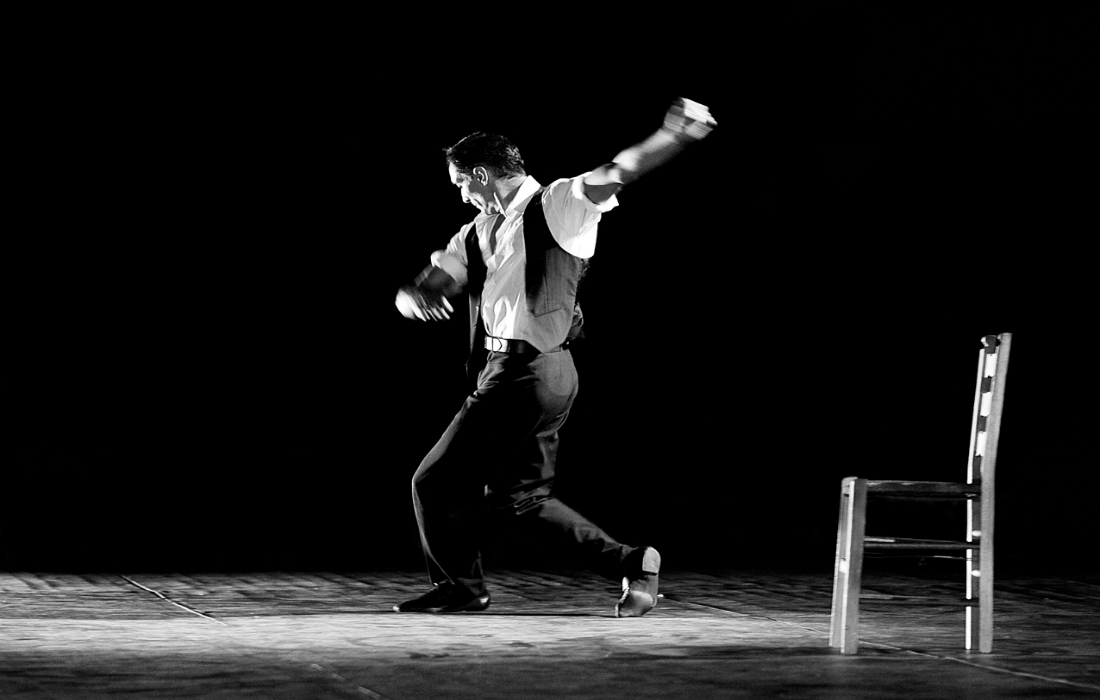 instagram.com/greekdances_hcc/9Dear friends,
instagram.com/greekdances_hcc/9Dear friends,
We are glad to present new summer cool videos from our guys from the Dance and Vocal Groups of the GKC ( artistic directors Oksana Rakcheeva and Inessa Efremidou, with the regular participation of our good friend, Greek musician Dimitrios Katsiuras).
Enjoy together!!!
9000 music: Mimis Plessas, lyrics: Lefteris Papadopoulos)
https://disk.yandex.ru/i/dqYH7xCeEJlfXQ
Read more..
Added: 07 June 2022 13:38
Greg 9000 hours 9000 E K 9000 9000 9000 ,0005,0005 K U L B T in 9000 9000 Ы Й Ц Е Н Т Р - Г К C !!!
ACT I B H 008 S T B - P O T 9000 C T B O P 005
L E D O B T 9000 On with T B - in N 9000 9000 9000 006 On
C T B - P 9000 E 9000 9000 9000 and ,0005 9000 NELS H O with T B D 9000 E 9000 L 9000 L. 0007 Y !!!
0007 Y !!!
TA N E C. T N 9000 9000 E E E E E E E E E is 9000 E E E E E E E E is 9000 E E E E E E E is 9000 E 000 E E E E E E is 9000 E E E E E E is 9000 E E E E E is I E W E R A K TA H E C - Greek dance !!!
Children and adults
Greek dance - updated schedule
for in 9000 9000 9000 9000 9000006 R
O with L 9000 E Y !!!
http://www. hecucenter.ru/ru/greekdances/
hecucenter.ru/ru/greekdances/
Dear friends!
We invite you to plunge into the world of traditional dances.
Greek Cultural Center (GCC) is pleased to announce that for everyone who wants to get acquainted with the rich musical and dance traditions of the Greek World and learn how to dance the most popular national dances from different regions of mainland and island Greece, the land of Pontus, Asia Minor, Cappadocia. there are groups of Greek folk dances , for children and adults, for both beginners and advanced, already with certain skills !!!
Read more..
Added: May 19, 2022 17:22
Dear friends, dear compatriots!
Victory Day, how far it was from us,
As an ember melted in an extinct fire.
There were miles, burned in the dust -
We brought this day as close as we could.
This Victory Day -
Smell of gunpowder.
It's a holiday
With gray hair at the temples.
This is joy
With tears in his eyes.
Victory Day! Victory Day! Victory Day!
- Day of our General Great Victory
μαΐου - ημέρα της μεγάλης μας νίκης Congratulations to the dance collective and the head of Oksana Rachas. specially on Victory Day, our dance team recorded the next video clip - P Esnya “βασιλικό να κ'οβα” - The author of words and music, our friend from the island of Crete Vasilisa Messariyaki , performed by the famous Greek musician, bouzouki player, especially popular among the Hellenes and Philhellenes of the Russian capital and our great friend Dimitris Katsiuras and soloist of the Vocal Collective of the GCC Natalia Ratova Added: March 10, 2022 10:30 Dear friends, On the occasion of International Women's Day March 8, Greek Cultural Center-GCC In Moscow, I am glad to present a new video type specially prepared by dance groups Greek Cultural Center - GCC under the artistic direction of Oksana Rakcheeva, in collaboration with a teacher seconded from Greece Efstafios Nikitopoulos Greek Cultural Center-GCC In Moscow, I am glad to present a new video type specially prepared by dance team of Greek Cultural Center-GCC under the artistic leadership of Oksana Rakcheeva, in cooperation with Greece by the teacher Efstaphios Nichitopulos . Enjoy together!!! https://www.youtube.com/watch?v=aQnf Added: Jan 28, 2022 2:45 pm The dance group of the Greek Cultural Center presents! New video - “We are going to dance and have fun in Greek!!! Πάμε πάμε στα μπουζούκια!"!!!! A completely new format in the study of Greek dances " Πάμε πάμε στα μπουζούκια!"!!!! Look out for the first issue very soon, for the World Greek Language Day! Learn Greek dances (and also the Greek language) with us! HTTPS : // WWW . facebook . https :// www . facebook . com / Oxana . Rakcheeva . Korobko GCC Dance Team: Sunday, January 16, 2022 We are preparing, while in the Izmailovsky Kremlin , for performance, live, for Greek television, ERT TV channel - “ ερτ σαβατοκύριακο ” -“ERT -EXTRAINICAL ” with leading Greek journalists Skalcos with a cliff , Costas Laskaratos and Nina Kasimati . While we're getting ready, or what's left behind the scenes: our backstage waiting for the connection with Greece and other countries, participants of the video project “One world. Finally, we met remotely with colleagues and friends from the project from different parts of the world and said hello as part of a live broadcast on the first Greek TV channel! Light excitement and a lot of positive emotions and impressions! Dancing together - we are one world under the artistic direction of Oksana Rakcheeva and Efstafios Nikithopoulos and the leading Greek musician, bouzouki player, our good and faithful friend Dimitris Katsiouras . Song of the great Markos Vamvakaris Frangosiriani - Φραγκοσυριανή against the backdrop of the Tsaritsyno Palace in Moscow. Read more.. Each nation has its own characteristics and its own national dance. The Poles have the polka, the Brazilians have the samba, the Ukrainians have the hopak, the Irish have the tap dance, the Georgians have the lezginka. Greek dances are very reminiscent of Ukrainian, Moldavian, Romanian. One of the main rhythms on which folk songs are based is sirtos. This is the most ancient and basic group dance that the Greeks perform at weddings. Sirtos is the most patriotic dance. The Greek folk song (many call it rembetiko) is of late interest not only in Greece. It is studied at many universities in Europe, USA, Australia. In many countries (Finland, Sweden, Australia, USA) there is not just a theoretical study of this Greek music, but also its live performance by groups that play the bouzouki (a Greek folk instrument resembling a mandolin). On this instrument, you can play the melody and keep the rhythm at the same time. Bouzouki can be easily combined with other instruments: guitar, accordion, piano. Bouzouki conveys the melody subtly and modestly. Hasapiko dance is one of the main rhythms of Greek folk dances. It is distributed not only in Greece, but also in the Balkans. In Serbia, it can be found as Serbian, in Romania it is also called "hora". Russian Cossack dance is also related to this rhythm. Rembetiko is a classical stage in the development of the Greek folk urban song. Most Greek folk melodies are danceable (95 songs out of 100). The fact is that professional musicians played at holidays, weddings, in musical coffee houses, taverns, and restaurants. Someone counted that there were more than 200 dances, and even divided them into five groups: sacred, civil, ritual, home and stage. According to legend, sacred dances were brought to Greece from Egypt by Orpheus. He translated them into Greek. Sacred dances were performed during sacrifices and mysteries. Civil dances were performed during public holidays and ceremonies in squares and streets. The man of antiquity keenly felt the harmony of the Divine and the earthly. He found it in the dance too. The ancient Greeks considered dance a wonderful gift from the gods, which contained the unity of spiritual and physical beauty. The dance for them was communication with the Divine, and the gods themselves descended to earth to participate in the holidays, accompanied by dances. Terpsichore, the muse of dance, the companion of Apollo, the god of harmony, teaches the soul to harmonize with the body. In Lucian's treatise "On Dance", it is written that the samples of the primordial dance are given to us by the universe and the cosmos. When Chaos is replaced by an ordered movement, that is, by Rhythm, a “dance of stars” appears in the sky, a harmonious interlacing of moving and fixed luminaries. This is how dance is born. When I was at school, we organized a festival of the peoples of the USSR and learned folk dances. Well, at the disco we danced a primitive disco. Now many are watching ballroom dancing competitions and dancing with the stars with interest. But for some reason, there is no Russian dance in any competition. In the West, it is commonly believed that the outlandish jumps and antics of traditional Russian dance are the result of the cold climate of our northern country, and were invented by Russians solely to keep warm. Indeed, most of the traditional Russian holidays were celebrated in autumn and winter, when work in the field was over. The fun began with a prayer, then a plentiful drink and snacks, songs and dances, and the fist fight "wall to wall" completed the cycle. After the break, the procedure was repeated. The first official mention of Russian folk dance refers to 907, when Prince Oleg the Prophet celebrated his victory over the Greeks in Kyiv. At the gala reception, 16 dancers dressed as bears and four bears dressed as dancers performed for the guests. In 1113, Vladimir Monomakh, invited by the people of Kiev to reign in order to calm the lawlessness, drove through the city in the evening with his retinue. He immediately noticed a strange dance and pointed out to Metropolitan Nicephorus the dancing fellow. It turned out to be the bricklayer Petro Prisyadka. Within a few days, Petro was dancing for the Grand Duke of All Russia every breakfast, lunch and dinner. In 1937, Russia's first professional folk dance ensemble appeared under the direction of Igor Moiseev - the best academic folk dance ensemble in the world. Today, folk dances are experiencing a rebirth. Not least because it is folk dances that serve as a source of new choreographic delights in ballet. For several years Alexei worked as chief choreographer of the Bolshoi Theater in Moscow, and most recently, the premiere of his production of the ballet Anna Karenina took place at the Mariinsky Theater in St. Petersburg. Alexei Ratmansky believes that interest in ballet is declining. Ballet is an aristocratic art. Anyone who wants to listen to the discussion with Alexei Ratmansky can download the audio file in dvf format (two hours) from the download link: http://files. If the soul of a people is revealed in dance, what is the soul of a people? — Isn't it a fiction — the “Russian soul”? 
 com / HCCMoscow
com / HCCMoscow 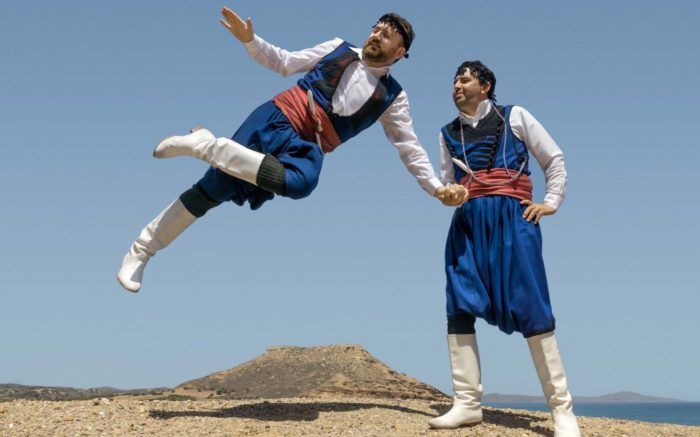 one love. One dance.
one love. One dance.
DANCES OF GREECE2084
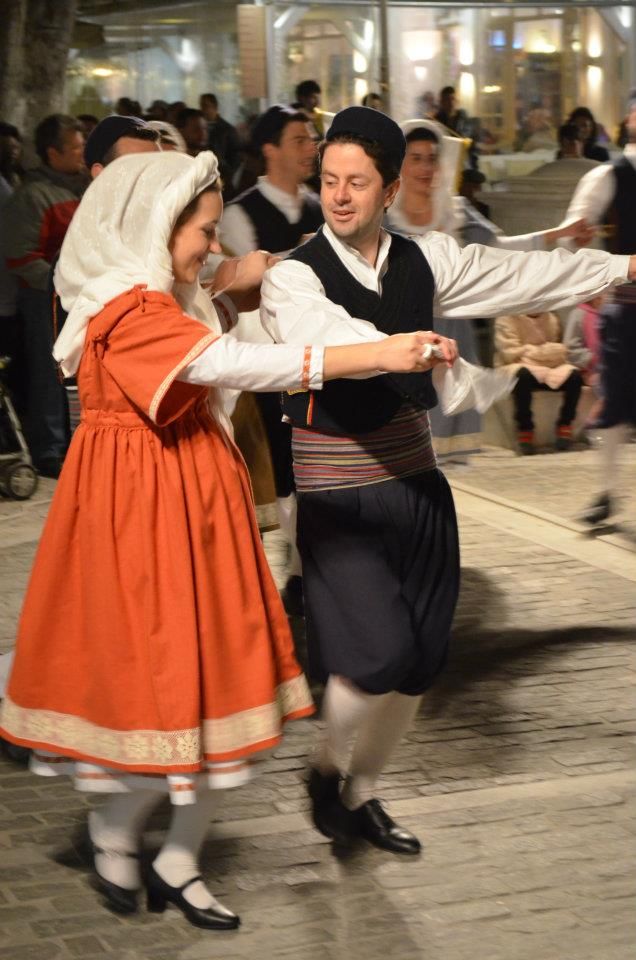 ..
..
There is an opinion that it is in the dance that the soul of the people is revealed.
If in Russia any foreigner is forced to drink vodka (such is our system of recognition "friend or foe"), then in Greece a stranger is led to dance.
When I traveled around Greece, I was told that the peculiarity of the Greek national character is also manifested in the habit of dancing national Greek dances even in discos.
To understand Greek music means to feel the soul of Greece. Music and dance are the psyche of the Greek people. To understand Greek dance, to catch the rhythm in music that is alien to the unaccustomed ear, means to get in touch with the Greek soul, which, surprisingly, is in many ways akin to the Russian soul.
Greek dances are taught today, and not only in Greece.
We also have schools of Russian folk dances. But where did you see Russian folk dances begin to dance in a restaurant? And in Greece it is accepted.
When I asked what distinguishes the Greeks from other peoples, they answered me - the ability and desire to dance Greek folk dances.
All tourists visiting Greece are taught to dance Greek folk dances, and above all the world famous sirtaki.
Sirtaki is a popular dance of Greek origin created in 1964 for the Hollywood film Zorba the Greek. Sirtaki is a diminutive form of the Greek word sirtos, which is the common name for several Cretan folk dances. It is not a Greek folk dance, but it is a combination of slow and fast versions of hasapiko, an old butcher's dance. The sirtaki dance, as well as the music for it, was written by the Greek composer Mykos Theodorakis.
Just as ancient Greek culture was based on Homer's epic poems, so modern Greek culture is based on the folk song.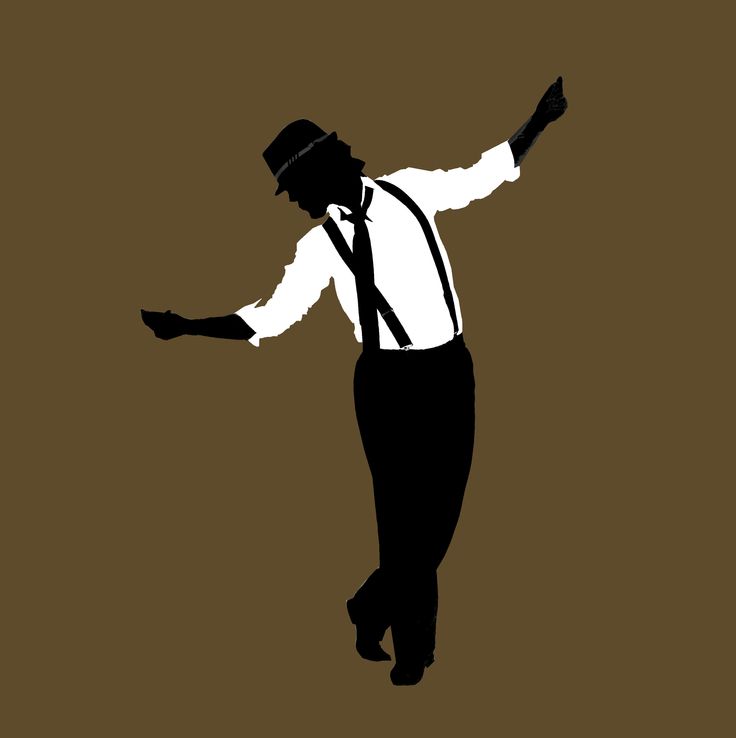 I have no doubt that in the future the folk songs of Greece will be studied as the poems of Homer are studied today.
I have no doubt that in the future the folk songs of Greece will be studied as the poems of Homer are studied today. 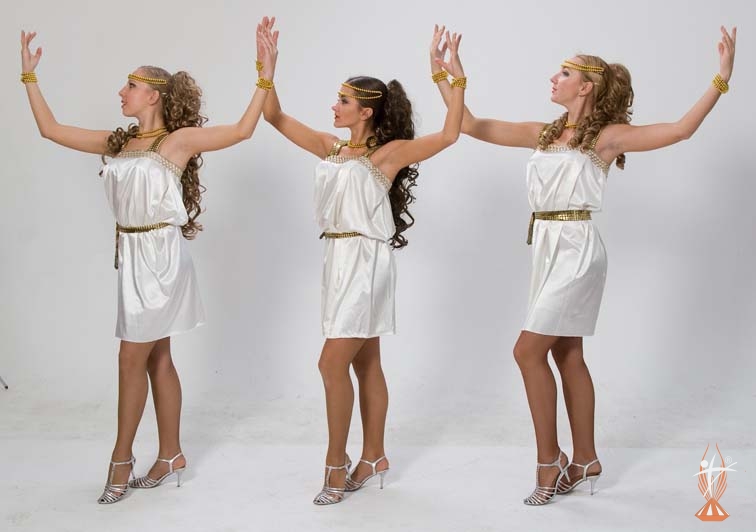 And it was in the interests of the performers that people like the music, that they get up, dance, order their favorite tunes and pay for them accordingly.
And it was in the interests of the performers that people like the music, that they get up, dance, order their favorite tunes and pay for them accordingly.  Dancing was a compulsory subject in gymnasiums. The unity of feeling and thought, dance, music and singing is harmony, which the Greeks considered a manifestation of divinity.
Dancing was a compulsory subject in gymnasiums. The unity of feeling and thought, dance, music and singing is harmony, which the Greeks considered a manifestation of divinity.
Already at a mature age, I enrolled in a dance school. They studied only foxtrot, cha-cha-cha, samba and others. Russian dances were not studied there, and therefore I soon left. 
At cold air temperatures, extreme dancing was the best way to continue the fun on the street.
Dances with bears are considered traditional in Russia. Just as in Japan the image of a dragon is revealed in dances, so in Russia the image of a rooster, and in Siberia - a bear.
Bricklayer Petro Prisyadka worked hard, squatting with heavy stones and tools in his callused hands. Every evening, after his labor feat, he went out to Khreshchatyk and, having taken a ladle of wine and a loaf, began to jump, stretching his legs that had become stiff during the day.
Dancing like a squat or squat soon became fashionable in prosperous Kyiv. The fat buffoons were losing weight and learning to dance "B-Squat", breaking their crooked legs on the nasty medieval sidewalks. 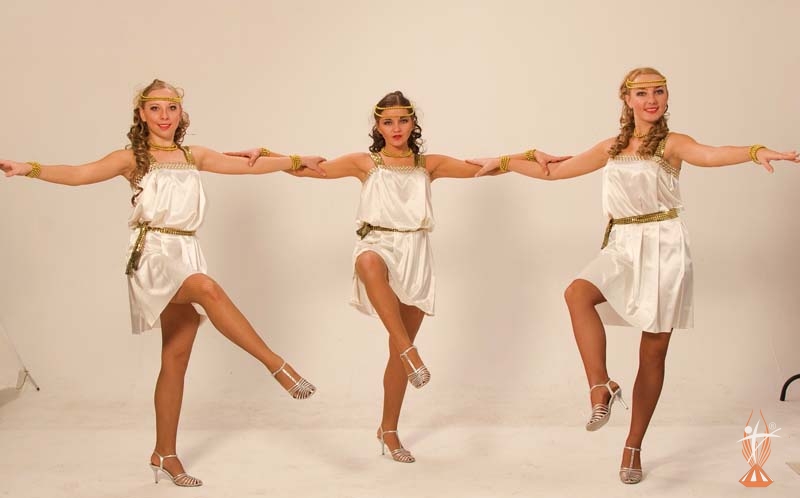 The productions, tricks and ideas of the group are used by almost all choreographers in the world, except for the most uneducated and lazy ones.
The productions, tricks and ideas of the group are used by almost all choreographers in the world, except for the most uneducated and lazy ones.
Once I was asked to entertain a foreign guest, and I invited him to a concert of the Boris Moiseev Dance Ensemble. Not only my foreign guest refused in delight, but also I myself. He is such Russian dances simply breathtaking!
That's exactly what Alexei Ratmansky, recently recognized as the best choreographer in Russia, thinks.
I managed to talk to Alexei Ratmansky in the discussion club of the philological faculty of St. Petersburg State University "Modernity through the prism of literature".
What seems beautiful to us seems strange in Europe.
The Russian ballet school does not allow ultra-modern choreography to be danced.
It is impossible to convey a modern story with the help of classical dance techniques.
Classical dances are not staged now, this is a dead language.
Classical performance is a language that is not spoken now.
You can't put something that the audience won't understand, but you can't follow the audience's lead either.
The French are now ahead of everyone in the ballet school, and our compatriot Rudolf Nureyev gave them an impetus.
Russian actors find it necessary to express themselves through movement.
The strongest dancers in the New York City Ballet. 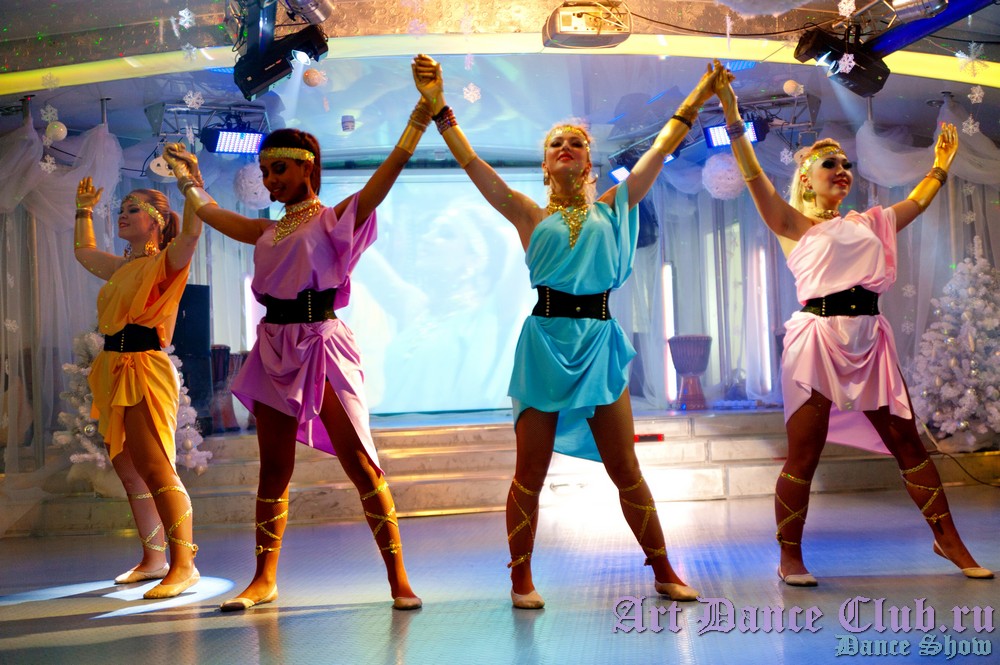 mail.ru/AOIV9S
mail.ru/AOIV9S
Plug-in from Sony here: http://www.nch. com.au/scribe/sony.html
— I only know what distinguishes her brotherhood, the need for sacrificial service and not the deification of private property. Russian is not a nationality, it is a worldview! We have the soul of a child! Compared to other nations, we seem to be stuck in childhood. It is difficult to understand us, how difficult it is for an adult to return to childhood. And do not look in Russia for what is in the West. Russia will never be a country of comfort, neither material nor spiritual. It was, is and will be the country of the Spirit, the place of his incessant fight for the hearts of people.
The Russian soul cannot live without suffering, but before compassion, because as soon as it releases from the captivity of pleasure and personal gain. We are ready to suffer with joy for the sake of everyone, finding in this the meaning of our existence.
.
 Greek dancing may be your only opportunity to meet that girl or guy that you'd never be able to get a chance to talk to in any other circumstance because you'd have to get through the girl's cousins or the guy's parea that normally encircle them. Greek dancing is a free-for-all experience where you can suddenly find yourself in line next to girl/guy of your dreams either on purpose or completely by accident. How you end up there usually depends on if you're a guy or a girl. If you're a guy you find a way to get into a line next to that girl which sometimes involves more line transfers than your morning Metro ride. If you're a girl, you're dragging the guy who's sitting down at a table out onto the dance floor -- a bold move, but we've seen it pulled off successfully on a number of occasions. Once you're out there dancing with them, if you can survive a Kalamatiano medley without stepping on them, you might have a shot of meeting them once the music stops. If you're a decent Greek dancer, you may be able to talk to them while you are actually dancing.
Greek dancing may be your only opportunity to meet that girl or guy that you'd never be able to get a chance to talk to in any other circumstance because you'd have to get through the girl's cousins or the guy's parea that normally encircle them. Greek dancing is a free-for-all experience where you can suddenly find yourself in line next to girl/guy of your dreams either on purpose or completely by accident. How you end up there usually depends on if you're a guy or a girl. If you're a guy you find a way to get into a line next to that girl which sometimes involves more line transfers than your morning Metro ride. If you're a girl, you're dragging the guy who's sitting down at a table out onto the dance floor -- a bold move, but we've seen it pulled off successfully on a number of occasions. Once you're out there dancing with them, if you can survive a Kalamatiano medley without stepping on them, you might have a shot of meeting them once the music stops. If you're a decent Greek dancer, you may be able to talk to them while you are actually dancing.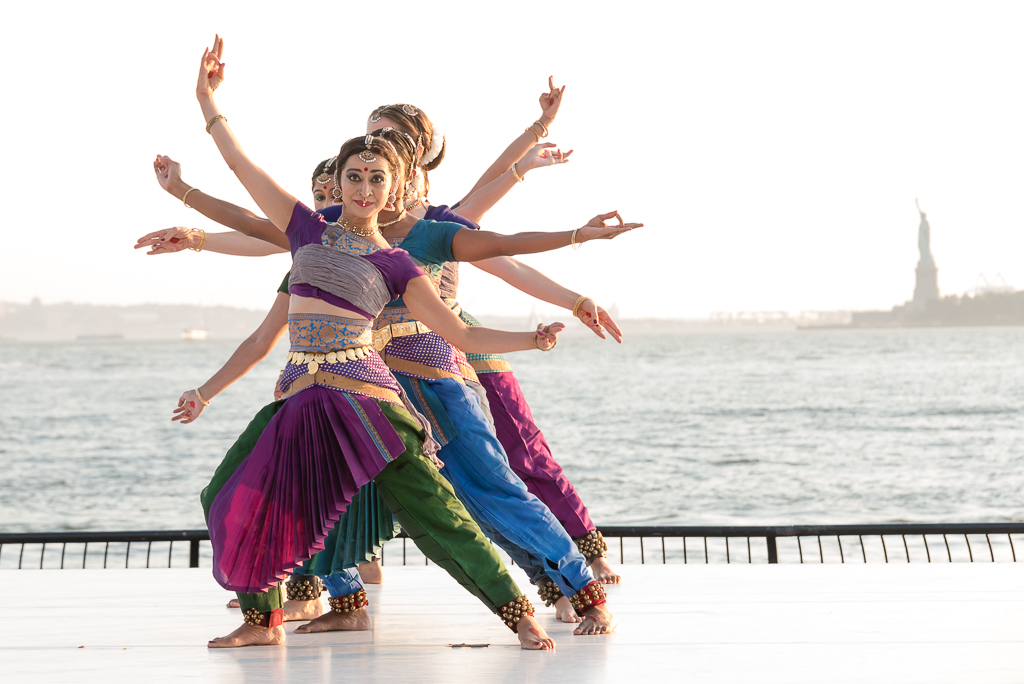 But unless you're really good, the place to be is behind them, because the rest of the line doesn't like that guy/girl who derails the Hasaposerviko Express by running into the person in front of them because they weren't paying attention to where they were going.
But unless you're really good, the place to be is behind them, because the rest of the line doesn't like that guy/girl who derails the Hasaposerviko Express by running into the person in front of them because they weren't paying attention to where they were going. 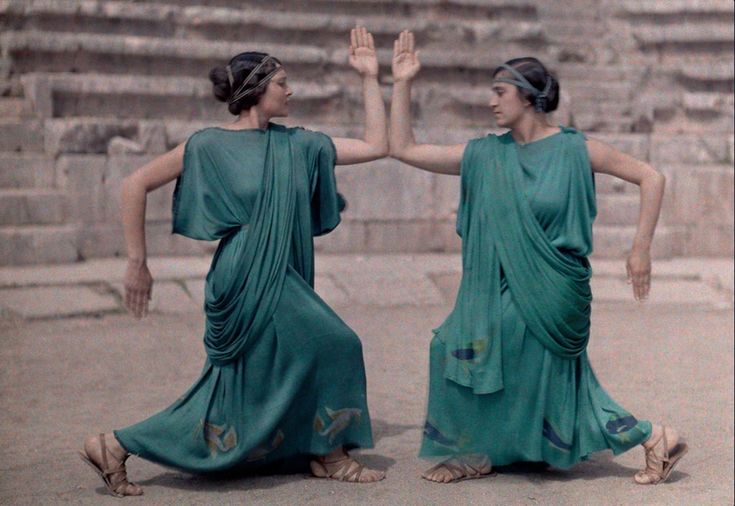 Don't ever go to the beginning of the line because you're going to be expected to lead. If you somehow find yourself at the beginning of the line, steer the line to the outside of the dance floor, and get in a holding pattern just long enough for a more experienced dancer to come and relieve you. Avoid the always dangerous drunk centipede path of destruction, where you start crossing under other dance lines, your own dance line, the band's equipment, and other places that will result in the loss of segments from your line.
Don't ever go to the beginning of the line because you're going to be expected to lead. If you somehow find yourself at the beginning of the line, steer the line to the outside of the dance floor, and get in a holding pattern just long enough for a more experienced dancer to come and relieve you. Avoid the always dangerous drunk centipede path of destruction, where you start crossing under other dance lines, your own dance line, the band's equipment, and other places that will result in the loss of segments from your line.  You can fake your footwork at most Greek dances and for the most part no one will mind or notice. Just as long as you don't step on anyone, either in your own line, or the line in front of you or behind you, you should be fine.
You can fake your footwork at most Greek dances and for the most part no one will mind or notice. Just as long as you don't step on anyone, either in your own line, or the line in front of you or behind you, you should be fine. 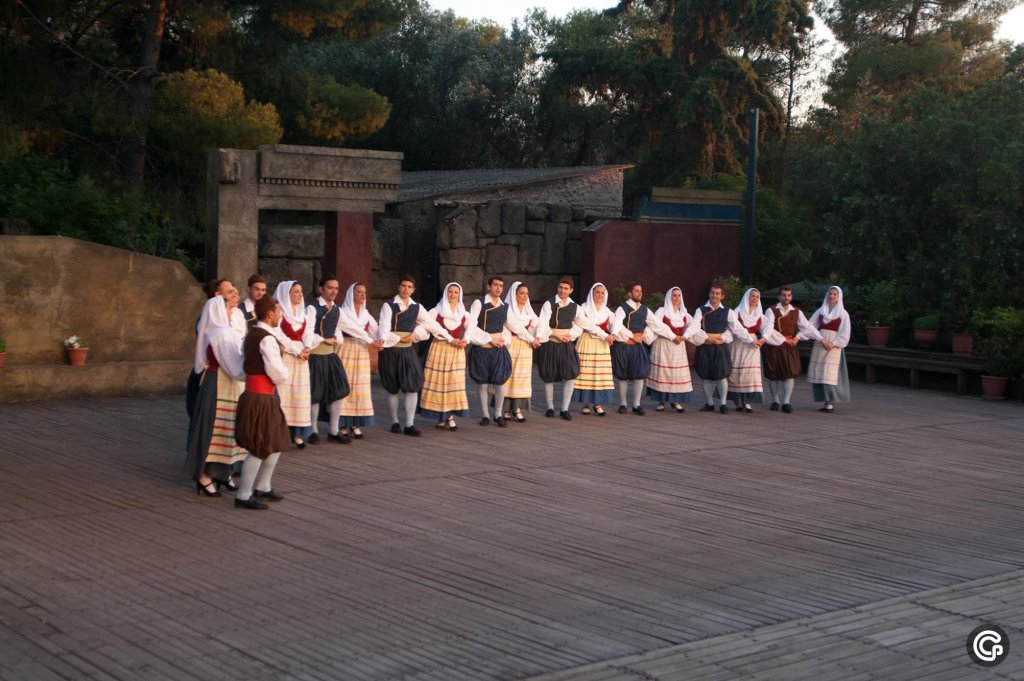 Ladies, I don't think a girl has ever gotten a lower score because of a poor tsifteteli performance -- it's like the salad that comes with your soulvaki platter -- bonus.
Ladies, I don't think a girl has ever gotten a lower score because of a poor tsifteteli performance -- it's like the salad that comes with your soulvaki platter -- bonus. 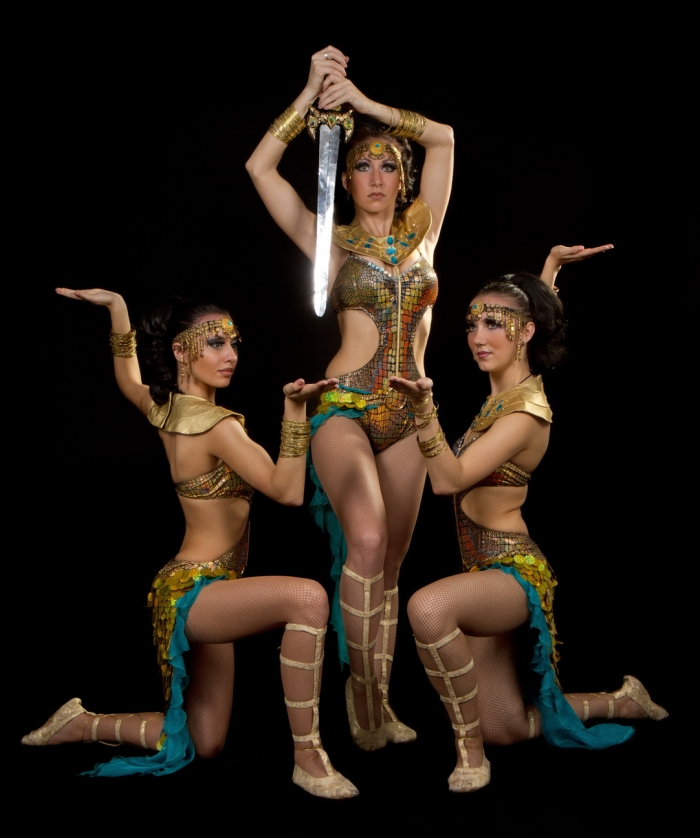 (That's the wooden shoes with the pom-poms, for any of you out there who can't speak Greek.)
(That's the wooden shoes with the pom-poms, for any of you out there who can't speak Greek.)  com Member
com Member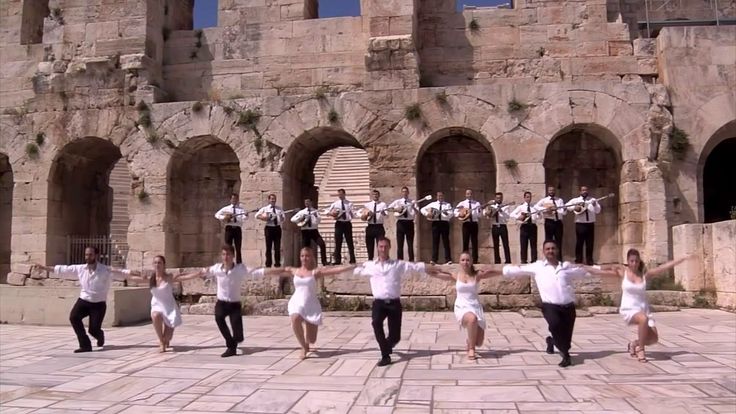 Kedrova 14, building 1, m. "Akademicheskaya" / Beginning of classes - September 10, 2022
Kedrova 14, building 1, m. "Akademicheskaya" / Beginning of classes - September 10, 2022 